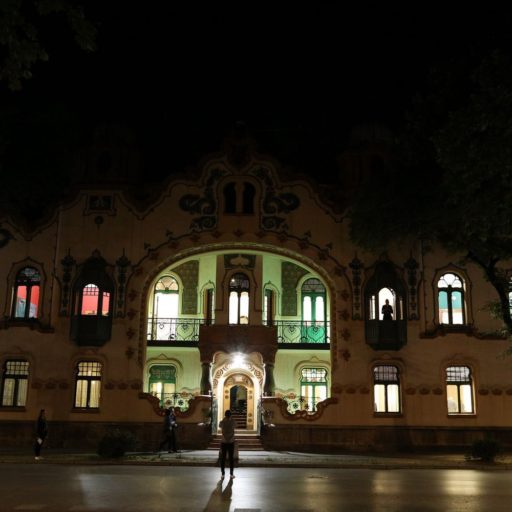Art Nouveau Architecture in Subotica
_______

City hall
Unlike many European cities, the center of Subotica is not dominated by a cathedral or a church, but by a City Hall. Because of its location, size and...

Salamon Sonnenberg Tenement Palace
Both Sonnenberg palaces were built in 1910, and designed by Izidor Strassburger and Lajos Gombos. The palace in Ðure Ðakovic Street (today the Hungari...

Miksa Dömötör tenement palace – city museum
Former owners and tenants of this palace have left a significant mark in medicine, journalism, entrepreneurship and art of Subotica. In 1906, the proj...

Golden Lamb hotel
The façade of the Golden Lamb Hotel building from the nineteenth century was restored in the style of the Munich version of Art Nouveau – Jugendstil, ...

Memorial fountain
Memorial Fountain in Palić, which is located along the coast of the lake, next to the Grand Terrace and the Music Pavilion, built in 1912 in honor of ...

Ferenc Raichle’s Palace
Architect Raichle Ferenc chose one of the most beautiful sites in Subotica for his future home and office. Working for himself only, and following his...

Grand terrace
The Grand Terrace is the most important building on Palić, built in the style of secession. The building was built in 1912 by the famous Hungarian arc...

Hungarian general credit bank palace
Although large in size with its excellent location, the former bank building – compared to the City Hall, the spacious square and what was once ...

Subotica Savings Bank Palace
This building, in the Hungarian Art Nouveau style, was designed by Marcell Komor and Dezső Jakab, after the Synagogue and just before the City Hall, i...

Town tenement palace
The Town Tenement Palace was designed in the spirit of Vienna Secession with such creativity that it stands out from all the other palaces in the city...

József Roznovsky tenement palace
The palace was designed by architect from Subotica Titus Mačković in 1909. It is the only two-storey building and the only Art Nouveau building in the...

Women’s lido
The Women’s Lido has its present meaning and value, but you can fully see this object only if you know its past or look closely at this fabulous...

Music pavilion
This simple facility is located in the area between the Great Terrace and the lake shore, along the central alley leading from the Water Tower to the ...

Konen palace
The mysterious villa is concealed among the pines of the Great Park and it belonged to William Konen, industrialist from Subotica. It was designed by ...

Austro-Hungarian bank palace
This massive ground-floor building which gives the impression of security and stability was designed by Ferenc Raichle in 1901. The influence of Art N...

Dušan Stojković palace
Although the palace was initially designed and built back in the early nineteenth century, architect Géza Kocka is the one responsible for its present...

Simeon Leović tenement palace
Art Nouveau first arrived in Subotica with the construction of Simeon Leović Tenement Palace, in 1893. Some of the characteristics of this style such ...

Synagogue
For its Synagogue, Subotica’s Jewish Community chose the design that won second prize in the Szeged synagogue architectural competition, thus making S...

Water tower
The Palić Water Tower, located next to the main road, is also today a symbol of Palić. It’s hard to imagine a Palić postcard without a water tow...
NEWS
Subscribe and stay with up to date with latest news from Subotica!



























